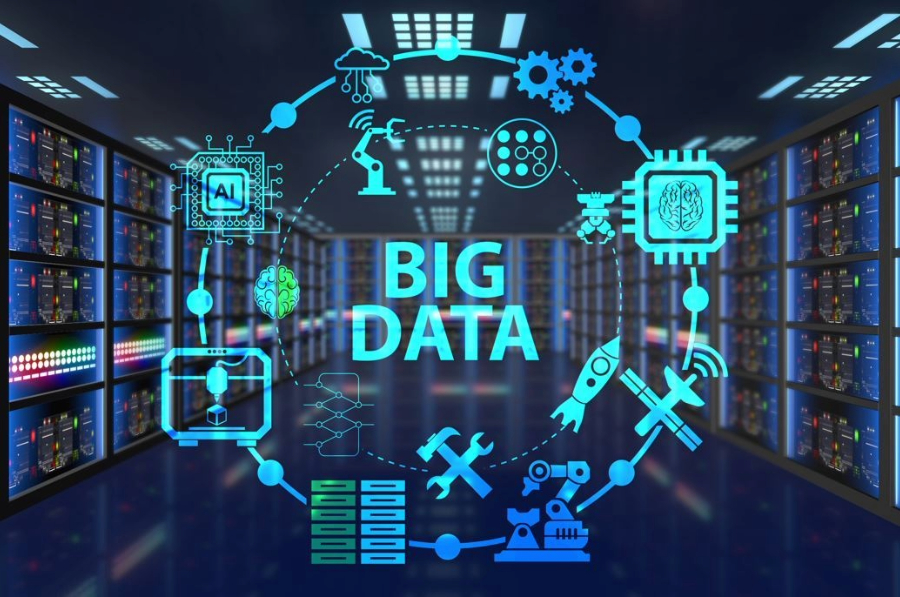The Big Data Rush: Edge Computing for Data Processing
Big data is a combination of structured, semi-structured, and unstructured data collected by organizations that can be mined for information and used in machine learning projects, predictive modeling, and other advanced analytics applications. It is a type of data that is too large, complex, and fast-changing to be processed using traditional methods. Big data can be structured, unstructured, or semi-structured. Structured data is data that is organized in a predefined format, such as a spreadsheet. Unstructured data is data that does not have a predefined format, such as text, images, or video. Semi-structured data is data that has some structure but is not enough to be considered structured data, such as emails and XML files.
Big Data Tools
- Apache Hadoop
- Apache Spark
- Apache Kafka
- MongoDB.
Impacts of the Big Data Rush
The big data rush is having a profound impact on various industries and aspects of our lives, including:
- Business: Businesses are using big data to gain a competitive edge by improving customer segmentation, optimizing supply chains, and developing new products and services.
- Healthcare: Big data is being used to improve healthcare outcomes by enabling personalized medicine, predicting disease outbreaks, and optimizing resource allocation.
- Finance: Big data is helping financial institutions detect fraud, manage risk, and make informed investment decisions.
- Government: Governments are using big data to improve public safety, enhance urban planning, and provide more efficient services to citizens.
Edge Computing for Data Processing
In today’s hyper-connected world, the volume of data generated has reached unprecedented levels, primarily due to the proliferation of IoT devices. Enter edge computing, a transformative paradigm in the realm of data processing that’s reshaping the way we handle information.
What is edge computing? Think of it as a decentralized approach to data processing. Instead of relying solely on distant data centers, edge computing brings computation closer to the data source. This proximity reduces latency and enhances real-time processing capabilities, making it ideal for applications that require instantaneous responses.
The future of data processing and analysis refers to the anticipated developments and trends in the field of handling and interpreting data. It encompasses technological advancements, methodologies, and techniques that empower organizations and individuals to efficiently process, analyze, and extract valuable insights from vast quantities of data. The concept of edge computing, highlighting its core principle of processing data closer to the source, addresses the challenges related to infrastructure development and the need for standardized protocols to ensure seamless integration of edge computing. Highlight the improved security and reliability that edge computing offers by reducing vulnerabilities associated with transmitting data across networks.
Future Trends
The future of edge computing is promising. With the deployment of 5G networks, the bandwidth and connectivity constraints that previously hindered edge computing will be significantly alleviated. This will enable real-time data processing on a larger scale, unlocking new possibilities across industries. Furthermore, the integration of edge computing with artificial intelligence (AI) will enhance local decision-making capabilities, enabling devices to autonomously process and act upon data. As edge computing continues to evolve, we can expect increased adoption in various domains, from smart homes and retail to healthcare and industrial automation.
A career in edge computing, acquiring skills in areas like AI and machine learning, cybersecurity, IoT, cloud computing, and distributed systems, will be invaluable. Staying updated with the latest advancements in edge technologies, coupled with a willingness to adapt and learn, will be key to thriving in this rapidly evolving landscape. The opportunities in edge computing are vast and varied, promising fulfilling careers for those passionate about pushing the boundaries of technology. As this field continues to evolve, the demand for skilled professionals across hardware, networking, and software segments will only continue to grow.
The Big Data Rush
The big data rush refers to the rapid and ongoing growth of data generation and the increasing demand for tools and technologies to manage and analyze this data. The rapid growth of digital technologies such as the Internet of Things (IoT), social media, and mobile devices, which are continually generating new data streams, is driving this issue.
Data centres use IT infrastructure such as servers, storage, network components such as switches and routers, systems, and application software. Uninterrupted power supplies and robust cooling systems are a must for data centres.
Types of data centers
- Enterprise data centers: These data centers are owned and operated by businesses to store and process their data.
- Colocation data centers: These data centers provide space, power, and cooling for businesses that want to outsource their data center operations.
- Cloud data centers: These data centers provide data storage and processing services on a pay-as-you-go basis.
Future trends in data centres
- Data centres will focus on greening in the future as a prominent strategy.
- As companies look at flexibility, cloud computing will become the mainstream.
- Data centre operations will focus on greater automation.
- Security and cyber resilience will be critical components for the industry.
- AI, especially the promulgation of generative AI, would be a significant driver for growth in the data centre space, as it would need a large digital processing and storage capacity.
Conclusion
The big data rush is a transformative era that is revolutionizing industries, reshaping economies, and fundamentally altering our understanding of the world. As the volume and complexity of data continue to grow, organizations face both challenges and opportunities. By embracing a data-driven culture and investing in the right talent and technologies, organizations can harness the power of big data to drive innovation, improve decision-making, and create a better future. In conclusion, the Big Data Rush isn’t a momentary sprint; it’s an enduring marathon where adaptability, ethical considerations, and technological prowess will shape our trajectory. Navigating this information highway will determine our success in this data-centric era.
Source
- https://www.bitsathy.ac.in/blog/the-big-data-rush-unearthing-insights-in-the-digital-age/
- https://hazelcast.com/glossary/edge-computing/
- https://www.simplilearn.com/tutorials/big-data-tutorial

